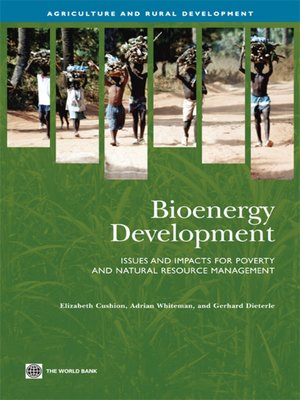Bioenergy Development
ebook ∣ Issues and Impacts for Poverty and Natural Resource Management · Agriculture and Rural Development
By Elizabeth Cushion

Sign up to save your library
With an OverDrive account, you can save your favorite libraries for at-a-glance information about availability. Find out more about OverDrive accounts.
Find this title in Libby, the library reading app by OverDrive.



Search for a digital library with this title
Title found at these libraries:
| Library Name | Distance |
|---|---|
| Loading... |
Bioenergy has been critically important since our ancestors first used wood to cook their food and stay warm at night. Traditional forms of bioenergy, firewood and cow dung patties, remain primary fuel sources for many rural and poor people. More modern sources of bioenergyâincluding ethanol and biodiesel for transport and wood pellets for heating, among many othersâoffer great promise but generate great controversy. This book gives an overview of bioenergy developments. It examines the main issues and possible socioeconomic implications of these developments, as well as their potential impacts on land use and the environment, especially with respect to forests. The authors present an introduction to bioenergy, provide a background and overview of solid biomass and liquid biofuels, and examine the opportunities and challenges at the regional and country levels. They also examine potential impacts for specific types of bioenergy. 'Bioenergy Development' does not attempt to be definitive on such subjects as the impact of bioenergy on food prices, but it does suggest the tradeoffs that need to be examined when considering bioenergy policies. The authors offer five main findings: ⢠Solid biomass will continue to provide a principal source of energy and should not be overlooked. ⢠There will be major land-use implications resulting from bioenergy developments. ⢠It is critical to consider tradeoffsâincluding those related to poverty, equity, and the environmentâwhen considering bioenergy policies. ⢠There is considerable potential for an increased use of forestry and timber waste as a bioenergy feedstock. ⢠The climate change impacts of bioenergy development are uncertain, and highly specific to location and feedstock.







